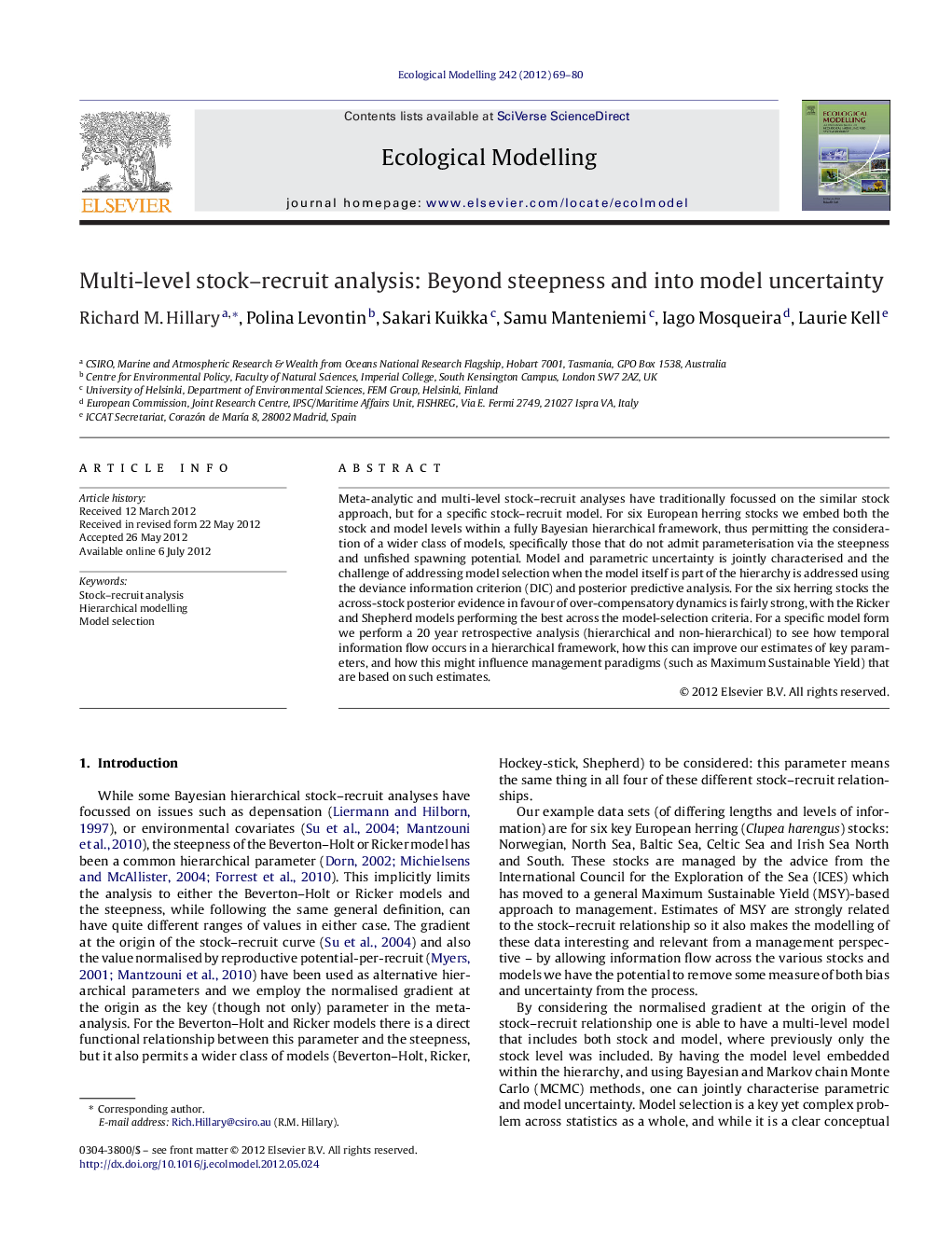| Article ID | Journal | Published Year | Pages | File Type |
|---|---|---|---|---|
| 4376375 | Ecological Modelling | 2012 | 12 Pages |
Meta-analytic and multi-level stock–recruit analyses have traditionally focussed on the similar stock approach, but for a specific stock–recruit model. For six European herring stocks we embed both the stock and model levels within a fully Bayesian hierarchical framework, thus permitting the consideration of a wider class of models, specifically those that do not admit parameterisation via the steepness and unfished spawning potential. Model and parametric uncertainty is jointly characterised and the challenge of addressing model selection when the model itself is part of the hierarchy is addressed using the deviance information criterion (DIC) and posterior predictive analysis. For the six herring stocks the across-stock posterior evidence in favour of over-compensatory dynamics is fairly strong, with the Ricker and Shepherd models performing the best across the model-selection criteria. For a specific model form we perform a 20 year retrospective analysis (hierarchical and non-hierarchical) to see how temporal information flow occurs in a hierarchical framework, how this can improve our estimates of key parameters, and how this might influence management paradigms (such as Maximum Sustainable Yield) that are based on such estimates.
► First meta-analysis of stock–recruit dynamics for six key European herring stocks. ► First stock–recruit model jointly addressing parametric and structural uncertainty. ► We perform a retrospective of hierarchical and standard approaches. ► We demonstrate management advantages of hierarchical approach.
